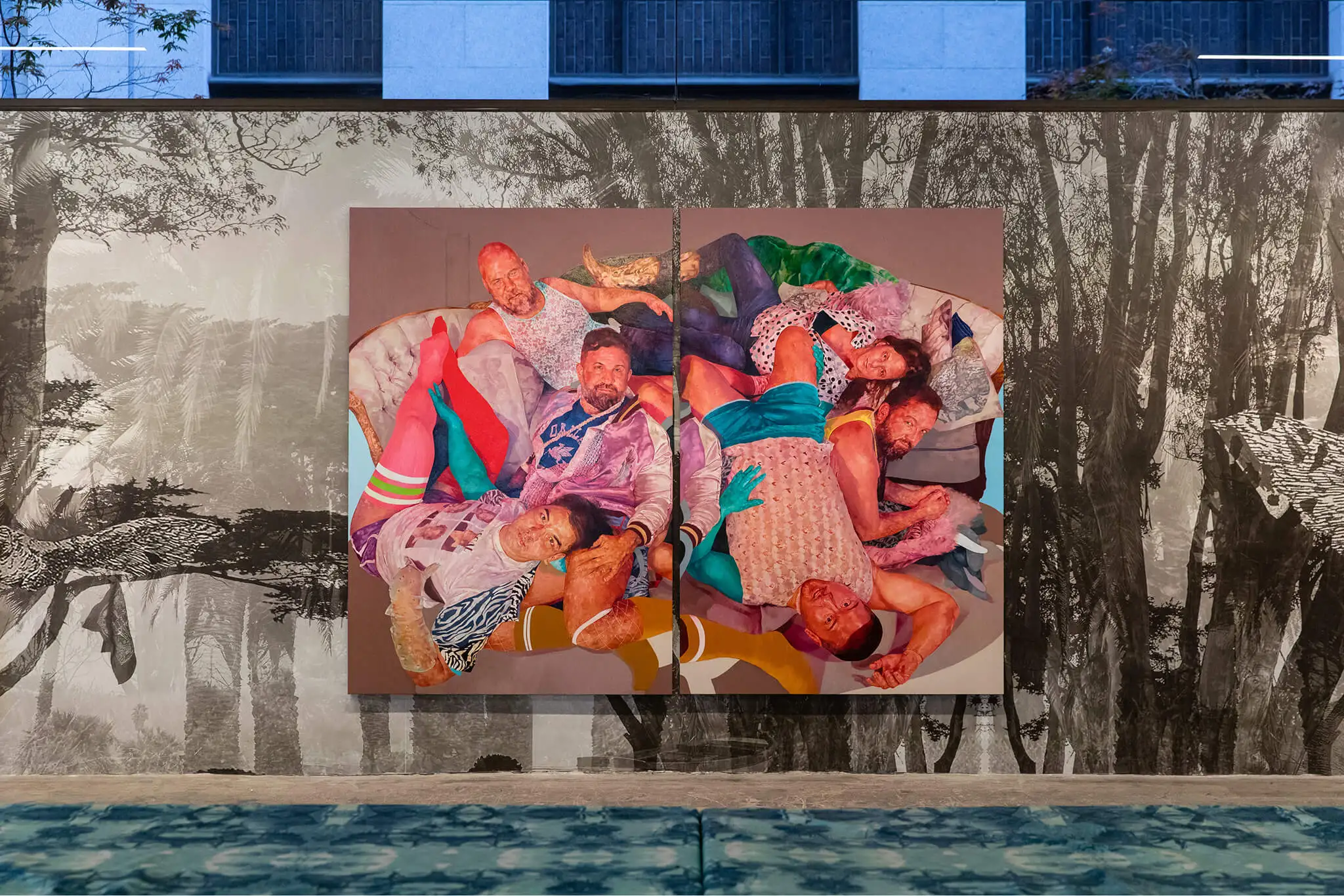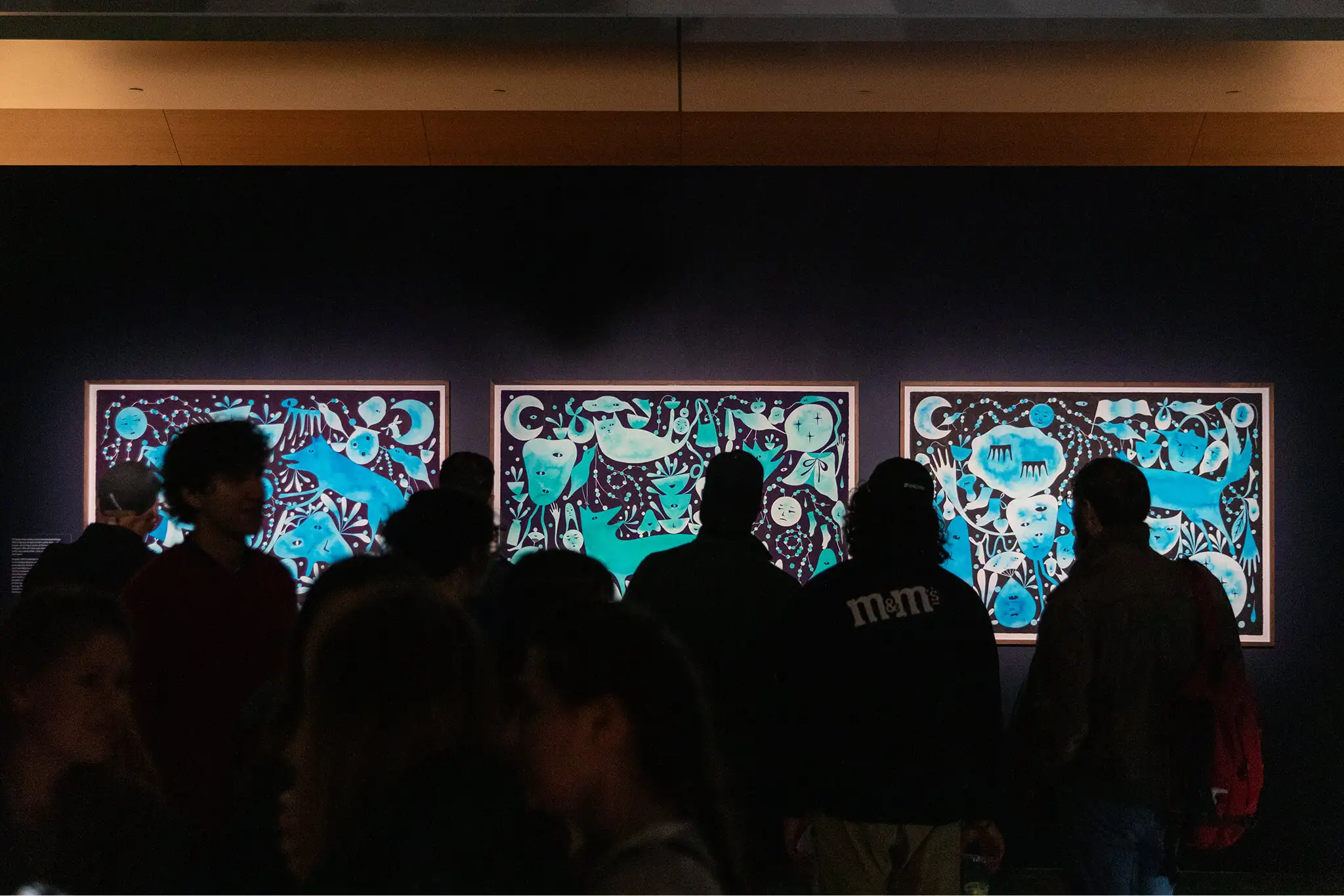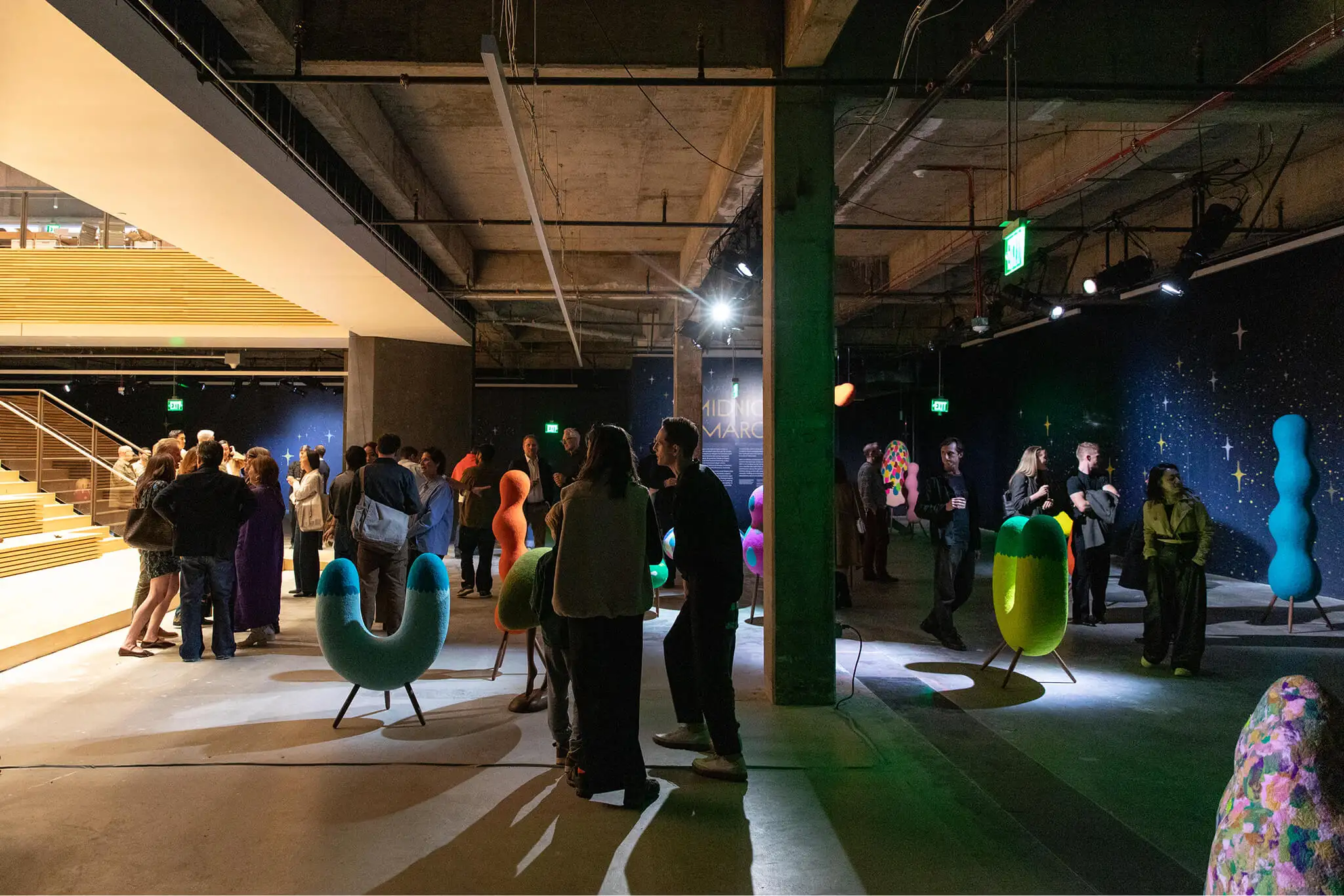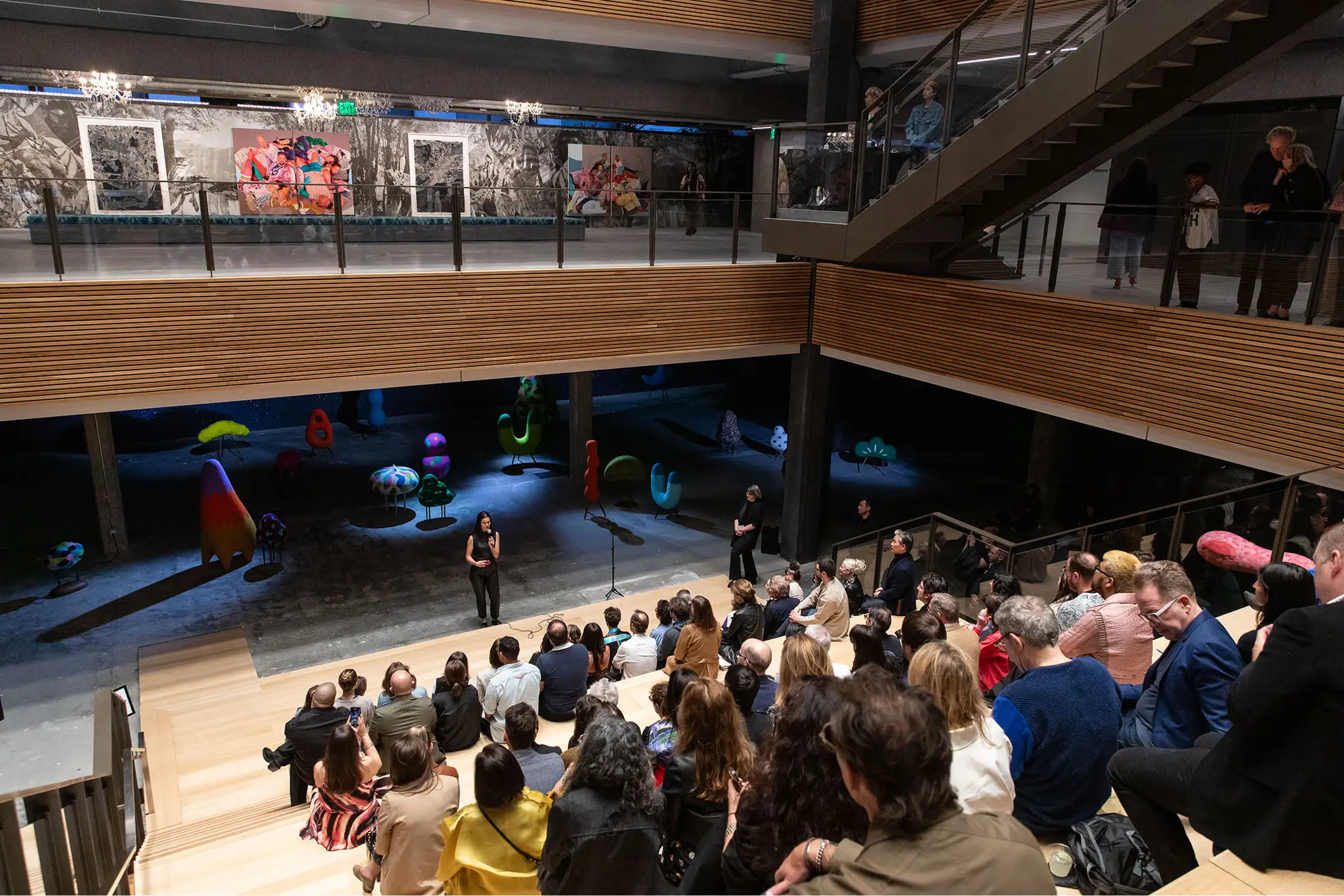Q: Please tell us what it is you do; what is your role?
As the LYRA Foundation Curator at ICA SF, I conceptualize exhibitions and work closely with artists to bring their visions to life. My role is about championing experimentation, amplifying underrepresented voices, and ensuring that the museum continues to be a space where urgent, resonant, and boundary-pushing work can flourish. I value the input of artists and audiences, and prioritize the kind of work that can speak to many different types of visitors.

"David Antonio Cruz: stay, take your time, my love." May 2025
Q: What is the ICA SF? What is it known for? The ICA SF describes itself as “a non-collecting contemporary art museum that prioritizes equity and expansion of the canon” — how does it do this?
ICA SF is such an intriguing model. Because we don’t have a permanent collection, we’re able to focus our energy and resources on living artists—including those whose work doesn’t always fit neatly into traditional museum frameworks. We want to support bold ideas and give artists the space to take real creative risks. Our inaugural exhibition with Jeffrey Gibson was a great example of that—he literally dug into our concrete floor and presented a conceptual video-based show. Masako Miki dreamed of building a darker, immersive environment for her sculptural work, which we were able to bring to life in her largest exhibition yet. For David Antonio Cruz: stay, take your time, my love, we commissioned new work (one new painting, two new drawings, a 104-foot mural, and mixed-media installation) from him that all responds to the queer histories of San Francisco, showing how national conversations can be grounded in local stories and place-based memory.
Q: What is exciting about the grant from LYRA Foundation? And why is this partnership between LYRA and ICA SF so special? How will the LYRA grant benefit the museum and the broader art community?
LYRA Foundation’s support is game-changing. It allows us to commit to ambitious, large-scale commissions and long-term collaborations with artists. This partnership is special because it’s rooted in shared values: curiosity, experimentation, and a belief in the power of contemporary art to challenge, illuminate, and inspire. Beyond the museum, the LYRA grant uplifts the broader arts ecosystem of San Francisco by investing in curatorial labor and artist-led innovation.

"Masako Miki: Midnight March." May 2025
Q: Please give us a bit more background on yourself. What was it that first inspired you about contemporary art? And what were the steps that led to you becoming a curator?
I was always a creative, dreamy kid, and found a deep sense of belonging in my high school art room. As a teenager I worked at the community arts nonprofit COSACOSA in Philadelphia, helping make public mosaics and murals. That early experience showed me how art can empower, build community, and tell stories. I did art historical research and curatorial work during college, then later worked at Second Street Gallery where I got hands-on experience with everything from writing to exhibition design to installation. Graduate school at California College of the Arts deepened my curatorial practice and reinforced my belief that artists are uniquely equipped to express shared humanity, critique power structures, and surface hidden histories with nuance and emotional truth.
Q: What are some of the challenges of working in the art world on the curatorial side? And what are some of the greatest joys?
The challenges? Limited resources, tight timelines, and the constant push to advocate for artists in a world that doesn’t always value creative labor. But the joys far outweigh them. There’s nothing like seeing an artist’s vision come to life—especially when the result is deeply personal, brave, or completely unexpected. Being part of that process brings me the most joy.

Visitors in "Masako Miki: Midnight March." May 2025
Q: Do you see yourself in the curatorial space for the long term? ICA SF encourages artists to ‘dream big’ and ‘take risks’ — how are you dreaming big? How would you like to see the ICA SF, and the art world as a whole, evolve and flourish in the coming years and decades?
Absolutely. I’m invested in curating for the long haul. At ICA SF, dreaming big means creating the conditions for artists to surprise even themselves. It means commissioning work that really couldn’t happen anywhere else, especially site-responsive sculptural installations. Long-term, I want to see more institutions shift toward transparency, equity, and collaboration—valuing curatorial and artistic labor not just in word but in structure.
Q: What are you most looking forward to accomplishing in the next three years?
I’m excited to deepen relationships with artists, build ambitious commissions from the ground up, and expand the museum’s reach both locally and nationally. I want ICA SF to continue taking risks—and for those risks to open new possibilities for artists and audiences alike.

Meghan Smith welcoming visitors to the VIP opening of "David Antonio Cruz: stay, take your time, my love" and "Masako Miki: Midnight March"
Q: What is it that gets you really excited and engaged with a particular art or artist? What are the qualities, motivations, and subtle (or not so subtle) qualities that spark your interest, and what is it that sets ‘good’ art apart from ‘truly great’ art?
I’m most drawn to artists who trust themselves—their eyes, their voice, their lived experience. There’s a clarity and conviction to great work, a refusal to pander or follow trends. It’s often not flashy, but it sticks with you. Great art makes you feel something and then think (or see the world) a little differently afterwards.
Q: Could you tell us about some of the current and upcoming exhibitions at the ICA SF? ICA SF opened in October 2022 and moved to its current location last year. What are some of the bigger plans for the museum in the coming years? How do you plan to grow and continue diversifying its offering?
Right now at ICA SF, we’re showing two major exhibitions and a great sculptural spotlight. Taking over the entire downstairs floor, Masako Miki: Midnight March draws from Japanese folklore and Shinto animism. The exhibition features an evolving cast of genderfluid, shape-shifting figures that reflect on identity, transformation, and collective belonging. We’re also presenting David Antonio Cruz: stay, take your time, my love—an exhibition centering queer people of color and the layered histories of San Francisco’s LGBTQ+ communities. The show includes multiple newly commissioned works created in response to this city and landscape.
In addition, we have a striking sculptural work by Tau Lewis on view by the California Street windows—a deeply textured, hand-sewn piece that speaks to ancestry and speculative memory.
Looking ahead to January 2026, we’re excited for a major two-person exhibition with Heidi Lau and Dominique Fung guest curated by Kathy Huang. Longer term, we’ll continue to grow by commissioning new work, supporting artists at pivotal moments in their careers, and expanding the kinds of stories that museums make space for.

Meghan Smith and Maryam Yousif in her solo exhibition, "Maryam Yousif: Riverbend"
Q: Finally, what advice would you give to young emerging artists? And what advice would you give to patrons and the public in terms of supporting such artists — whether financially or otherwise — and why is this important?
For emerging artists: Go see a ton of art. Soak it up. Talk to people. Be generous and curious. Trust your instincts, keep showing up for your work, and don’t let noise distract you from what matters.
For patrons and supporters: Support artists in sustained, long-term ways—whether by donating to museums, loaning out works from your collection, sharing the power of contemporary art with your networks, or simply showing up. Relationships are the lifeblood of the arts, and we all exist in a collaborative ecosystem. A little consistency goes a long way in helping artists thrive.